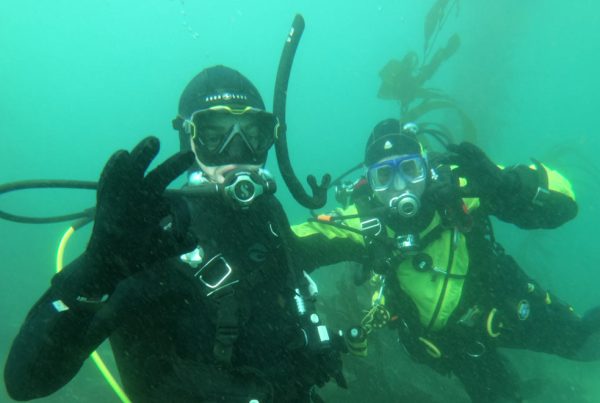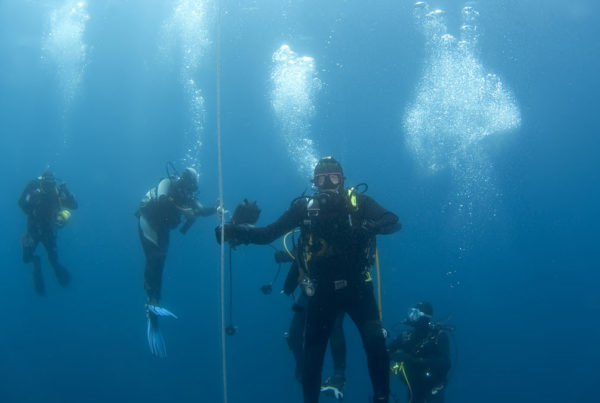While most divers like to dive in placid waters, there comes a time when it is desirable and pleasurable to dive in a current. So why deal with a current at all? Why not exclusively dive calm sites? Water-borne nutrients support all marine life, and currents bring the nutrients to the reef. Simply put, sites with consistent or at least intermittent currents have a greater amount and more varied marine life than placid sites. So what does it take to obtain a level of skill to safely and confidently execute a current dive?
In many places current diving is the most relaxing and physically easy diving you will ever do. These are drift dives where divers simply descend to the reef, ride the current, and your boat picks you up when you ascend. In general, but not exclusively, California charter boats do not operate this way. Although they may have a chase boat to recover divers who stray too far down current, they generally expect divers to dive from, and return to, the boat under their own power. So how do you dive in a current? First and foremost, listen to and follow the instructions of your captain/divemaster. They are most knowledge of the site, the current conditions, and what works best on their boat.
In a light current getting off the boat is easy. Execute your best giant stride, swim to the anchor line and descend, or if the current is light enough, you may try a free descent. Remember to descend quickly and not dally on the surface, otherwise you may begin your dive too far behind the boat. In a stiff current you may need a bit of help getting to the anchor line under your own power. The crew may rig a “tag line” from the anchor line, alongside the boat, to the stern so divers can pull themselves to the bow. Most of the time, but not always, the current at depth is weaker than the surface current, so dealing with a current at depth is easier.
Always begin your dive into the current. In California, look at the kelp to evaluate the current. Its direction and angle will provide not only the direction, but also the speed of the current. In the absence of kelp you can watch your bubbles, or drop up a bit of sand and observe which direction it falls. Hug the bottom to avoid the strongest part of the current and use the bottom topography to get in the placid water in the lee of rocks or reef. Remember to check your compass regularly and look for changes. The direction of the current can change during the dive, and there may be separate currents, running at different directions and speeds, at the surface and at depth.
When it is time to return to the boat, you will need to find the anchor. Remember that you will travel much faster swimming with than against the current, and it is very easy to overshoot your boat. Use your compass, and look up and listen for your boat. Another clue to get the your boat without incident is to look for other divers swimming on the surface. If yours is the only boat in the area, chances are they will point you in the right direction. In a swift current it is best not to surface to establish the position of your boat, as the current will rapidly sweep you behind the boat. If you are unable to find the anchor, use the kelp as an ascent line to get to the surface without drifting away.
On the surface either swim to the stern of the boat, or make use of the tag line. Should you be unfortunate and get behind your boat, look for the current line. All commercial boats will have a line out behind the boat in a current. It may not apparent to you if you are on the left or right side of the current line. Look at the boat; I’m confident that the crew will point to the direction for you to swim. Should you dive from a private boat you can rig the lines as the charter boats do, but always leave a competent boat operator onboard during your current dive.
With a little experience and guidance of an experienced buddy and crew, you can quickly develop the skills to be a confidant current diver. Your efforts will be rewarded since the greatest and most varied marine life is often found in the current.










